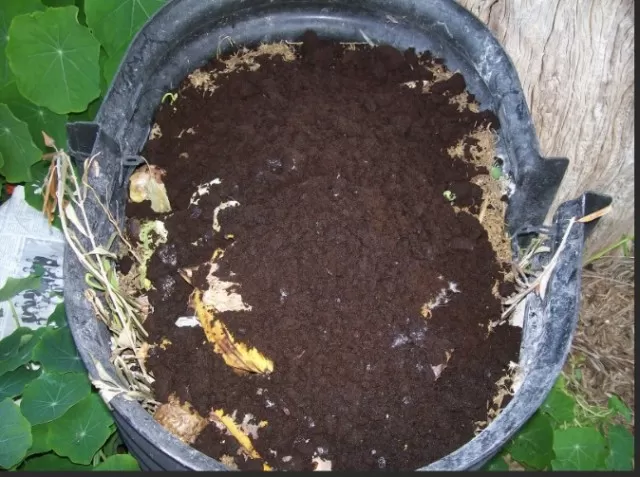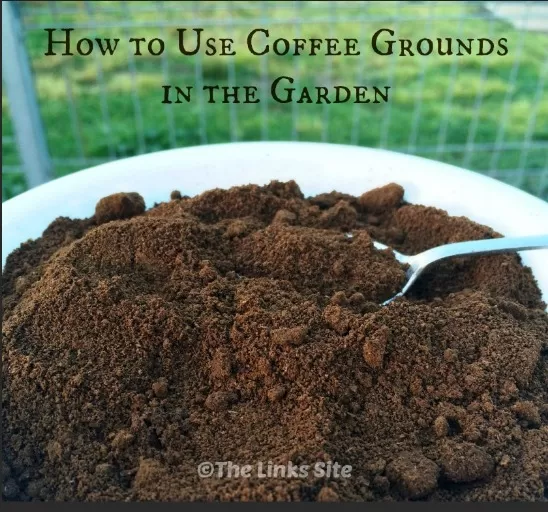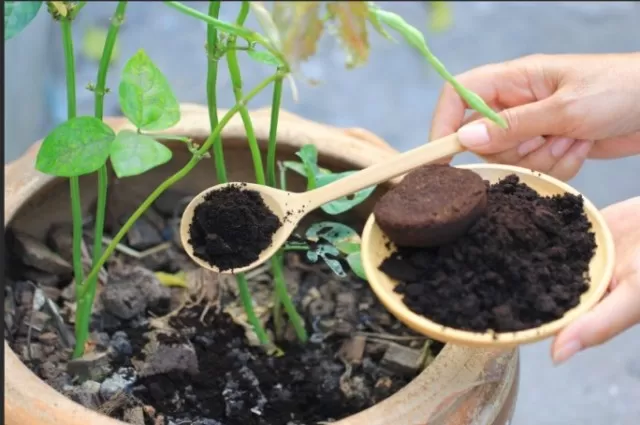Utilizing Coffee Grounds in the Garden: Tips and Tricks.Indeed, using coffee grounds for plants is firmly grounded in fact, and it offers numerous specific benefits to gardening enthusiasts.However, it’s essential to use coffee grounds in moderation, as excessive amounts can lead to soil acidity imbalance. Mixing them with other compost materials and organic matter is recommended to maintain a balanced and fertile soil environment.
So, if you’re a coffee lover and a passionate gardener, incorporating coffee grounds into your gardening routine can be an eco-friendly and beneficial way to support your plants and cultivate a thriving and sustainable garden.
Advantages of Incorporating Coffee Grounds into Your Garden: Improving Soil Health and Pest Management

Using coffee grounds in your garden can be a beneficial practice, but it is essential to understand how to use them properly.
While they offer numerous advantages, they might not be suitable for all plants. According to Linda Chalker-Scott from Washington State University, coffee grounds can hinder germination and growth in certain plants like alfalfa, clovers, mustards, geraniums, and asparagus ferns.
However, they can be safely applied to beets, cabbage, soybeans, and anthuriums.
One of the primary benefits of coffee grounds in the garden is their positive impact on soil structure.
When composted, coffee grounds attract earthworms, which burrow them deep into the soil, leading to improved soil aggregation. As they break down, coffee grounds also contribute to the creation of humus, a vital component of healthy and loose organic soil.
Additionally, composted coffee grounds provide nutrients to the soil, including small amounts of nitrogen and micronutrients.
However, it’s essential to note that during the decomposition process, they initially tie up nitrogen. To avoid nitrogen depletion, it’s best to ensure the coffee grounds are thoroughly composted before using them as fertilizer.
Alternatively, you can supplement them with other forms of fertilizer.
Coffee grounds also play a role in enhancing water retention in the soil.
As they transform into compost, they help the soil retain more moisture. This feature can be advantageous for gardens with dry soil, but it may not be as beneficial in already waterlogged areas, where excessive moisture retention could harm the plants.
Moreover, composted coffee grounds host beneficial fungi and bacteria that can combat harmful pathogens, such as those responsible for root rot.
Fungi like Fusarium and Pythium can be suppressed by the presence of decomposed coffee grounds, leading to a healthier garden environment.
Interestingly, coffee grounds can serve as a natural solution for controlling slugs in the garden.
Research from Oregon State University indicates that a soil drench made from a 1 to 2 percent solution of coffee grounds mixed with water effectively eliminates slugs. The caffeine content in the coffee grounds poisons the slugs, causing them to abandon the treated area and eventually die off.
In conclusion, coffee grounds can be valuable assets in your gardening endeavors, provided you understand their appropriate usage and the plants that benefit from them.
With their ability to improve soil structure, add nutrients, enhance water retention, and aid in pest management, coffee grounds present an eco-friendly and resourceful option for gardening enthusiasts.
Composting Coffee Grounds: Tips for Successful and Fruit Fly-Free Composting

Composting coffee grounds can be an excellent way to recycle organic waste and enrich your garden soil.
However, it’s essential to follow some guidelines to ensure a successful and efficient composting process.
Avoid Fruit Fly Infestation: Coffee grounds are known to attract fruit flies, which can become a nuisance in your compost pile.
To prevent this, bury the coffee grounds deep within the compost pile. Consider using either a freestanding compost pile or an enclosed, well-aerated compost bin to further deter fruit flies from infesting the compost.
Balance “Green” and “Brown” Ingredients: Coffee grounds, like grass clippings, are considered “green” compost ingredients.
To achieve a balanced compost, it’s crucial to add “brown” ingredients as well. Brown materials provide carbon, while green materials like coffee grounds offer nitrogen.
Add autumn leaves, sawdust, shredded paper, or other brown materials to the compost along with the coffee grounds.
Maintain the Right Proportions: Coffee grounds should not make up more than 20 to 25 percent of your compost pile.
Aim for a compost mix with at least three parts leaves, one part grass clippings, and one part coffee grounds. This balanced ratio ensures proper decomposition and a nutrient-rich end product.
Vermicomposting Considerations: If you’re vermicomposting (composting with worms), be mindful of the amount of coffee grounds you provide.
Coffee grounds should not make up more than ⅛ of the food your worms consume. A well-balanced diet for the worms will result in efficient vermicomposting.
Proper Moisture and Aeration: Cover your compost pile with plastic during heavy rains to prevent excessive waterlogging.
The compost should be kept lightly moist but not soggy. Turning the compost once per week ensures proper aeration and accelerates the decomposition process.
Exercise Patience: Composting is a gradual process, and it requires patience.
Typically, a coffee grounds compost pile takes around 3 to 6 months to break down completely. As the materials decompose, the compost pile will shrink by as much as 80 percent.
By following these tips, you can effectively compost coffee grounds and create nutrient-rich compost for your garden.
Composting not only reduces waste but also enhances soil health, promoting sustainable gardening practices.
Composting Coffee Grounds: A Guide to Fruit Fly-Free and Nutrient-Rich Compost

Composting coffee grounds is an excellent way to reduce waste and create nutrient-rich compost for your garden.
However, it’s crucial to follow specific steps to avoid fruit fly infestations and achieve successful composting.
Preventing Fruit Fly Infestation: Coffee grounds are known to attract fruit flies, which can disrupt the composting process.
To avoid this, bury the coffee grounds deep within your compost pile. Whether you have a freestanding compost pile or an enclosed, well-aerated compost bin, ensuring the coffee grounds are not exposed on the surface will discourage fruit flies from becoming a problem.
Balance Green and Brown Ingredients: Coffee grounds, similar to grass clippings, fall under the category of “green” compost ingredients, which provide nitrogen.
To achieve a balanced compost, you must include “brown” ingredients as well, which offer carbon. Add autumn leaves, sawdust, shredded paper, or other brown materials to the compost along with the coffee grounds.
Proper Proportions: Coffee grounds should comprise no more than 20 to 25 percent of your compost pile.
To maintain the right balance, aim for a compost mix with at least three parts leaves, one part grass clippings, and one part coffee grounds. This ensures optimal decomposition and a well-rounded compost mixture.
Vermicomposting Considerations: If you choose to vermicompost with worms, pay attention to the amount of coffee grounds you provide.
Coffee grounds should make up no more than ⅛ of the food your worms consume. A varied diet for the worms will lead to efficient vermicomposting.
Moisture and Aeration: Cover your compost pile with plastic during heavy rains to prevent excess water retention.
The compost should be kept lightly moist, but avoid making it overly soggy. Turning the compost about once per week promotes proper aeration, aiding the decomposition process.
Exercise Patience: Composting requires time and patience.
Generally, a coffee grounds compost pile will take around 3 to 6 months to break down completely. As the materials decompose, the compost pile will shrink by as much as 80 percent.
By adhering to these guidelines, you can successfully compost coffee grounds and create a valuable resource for your garden.
Composting not only helps manage organic waste effectively but also enhances soil health, leading to sustainable and fruitful gardening practices.
*The information is for reference only.